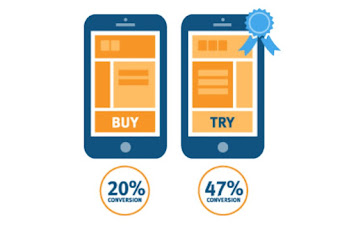Successful Planning and Measurement for a Data-Driven Ad Campaigns in Digital Advertising
Digital Ritesh
Planning for a Data-Driven Ad Campaign
One of the key challenges with personalized ad campaigns is the creative approvals needed. Managing this process well can make the difference between a process that seems to take forever and one that comes together quickly and launches on time.
The brand team needs to explore the available data signals and identify what is relevant to the brand.
This involves trying to identify possible correlations between consumers of the brand and the data signals.
After identifying key data signals, the next step is to identify how granular the data signal should be.
The next step is to figure out what specific conditions of the data signals should trigger the delivery of a specific creative or messaging.
It may develop assets for each of the trigger conditions, it is also important to develop creative messaging for a default condition that does not meet any of the rules.
At this point, the creative team starts to think of the creative canvas on which to deliver personalized creativity and messaging. This involves defining what parts of the ad will remain constant and what parts of the ad will be personalized to the user.
The default is the version of the ad that would be served if none of the programmed conditions were being met in the dynamic ad.
Creative production is the next step, it’s the process of building out all the variations of the ads and messaging.
It can be very challenging if it’s done using a technology platform that is not designed for dynamic ads.
First same in each variant of the ad, such as the logo, the skin, or some animation. This should be separated out from the variable components of the ad, such as messages, videos, and map location.
A good idea at this stage is to identify the metrics that will be measured in order to determine the success of the campaign.
Key metrics for performance-oriented dynamic ad campaigns are usually click-through, view-through, and conversion rates.
On the other side, branding campaigns tend to focus on other metrics, like engagement time, interactions and views.
Measuring the views is also a key for personalized ad campaigns because if an ad campaign has a low number of views on impression, the impact of the personalization will simply not be seen because is not enough relevant for users to create sufficient engagement.
Measurement for a Data-Driven Ad Campaign
Reporting and measurement of personalized ad campaigns are critical to marketers. With personalized ads, the creative variants of an ad can quickly get into the hundreds and thousands, and so collecting very precise data about each variant that was delivered and on what site becomes very critical.
Measurement of ROI for dynamic and personalized advertising campaigns can vary based on the goals of the campaign.
In general, dynamic ad campaigns can be sorted into performance marketing efforts and branding efforts.
Most campaigns are usually set up and measured to optimize either leads and conversions or brand engagement.
Performance, or direct response, campaigns that employ dynamic or personalized content often try to determine what types of content are producing the best results.
Measures here often include the following key metrics:
• Click-through rates (CTR): Measures how often users clicked through the ad to a web page;
• View-through rates (VTR): Measures how often users saw the ad and then reached the advertiser's website via other means;
• Conversion rates (CR): Measures how often users, after having seen the ad or clicked through the ad, actually purchased a product.
It is critical that performance-oriented dynamic ad campaigns not only measure these metrics but also report on them, so it becomes easier to optimize a campaign for better performance.
For campaigns that are much more focused on brand awareness, personalized advertising can be very impactful in creating awareness and engagement, but, it may also be more challenging to measure the impact of personalized advertising.
Brand lift studies, which have long been used to determine the lift caused by branding campaigns, are still a very effective means to measure the impact of personalized advertising.
It is often beneficial also to run an A/B test of standard creative versus personalized creative, it is the simplest form of testing to determine what creative or content combination is producing the best results.
What is A/B Testing?
A/B testing involves creating two variants of messaging or creative and running them in parallel in a single campaign, with an equal exposure of both variants to the users who see the ad.
The campaign is then optimized to serve the version that is producing the best performance between the two...
 |
| A/B testing |
More sophisticated A/B testing-based optimization algorithms often perform sampling with both creative variants to ensure that any changes in the performance of either creative are constantly monitored and factored into the weighting of the creative.
It may also be that a creative variant that wasn’t performing too well at a point in time may start performing well. Therefore, the ability to constantly test and evaluate combinations of creativity is vital to campaign performance.
Also Read,
What is Digital Marketing? Where to start?
How Digital Marketing Became the Best
Digital marketing vs traditional marketing
The digital advertising, a continuous disruption
How to grow your business with email marketing
Data Needed in Digital Advertising
Predictive Models of Data in Digital Advertising | Digital Ritesh









0 Comments